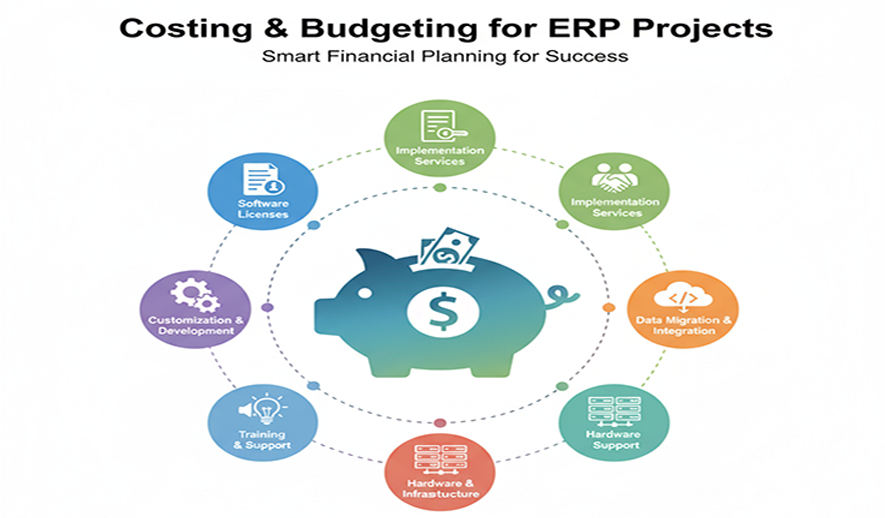
Costing & Budgeting for ERP Projects
To accurately budget for an ERP project, you must look beyond the initial software cost and account for every expense over the system's total cost of ownership (TCO). A realistic budget will include software, implementation, hardware, training, and ongoing maintenance.
Costing and budgeting essentials
Initial costs
These are the upfront expenses for acquiring the software and getting the project off the ground.
-
Software licensing: Your cost will depend on the vendor, features, and pricing model. Options include:
- Perpetual license (on-premise): A single, large upfront fee, followed by lower annual maintenance fees.
- Subscription-based (SaaS): Recurring monthly or annual payments per user. While upfront costs are lower, the total cost can be higher over the long term.
- User-based pricing: Cost determined by the number of users accessing the system.
- Modular pricing: Paying only for the specific functional modules your business needs.
- Hardware and infrastructure: For on-premise implementations, you must purchase and maintain your own servers, storage systems, and network equipment. Cloud-based solutions pass these costs to the vendor.
- Implementation services: Hiring a third-party implementation partner or consultant is a significant cost, often equaling or exceeding the software cost. This covers project management, business process mapping, and system configuration.
- Customization: Tailoring the software to fit unique business needs incurs substantial additional expenses. Customization levels are often categorized by impact:
- Basic: 10–15% added to the base cost.
- Moderate: 25–50% added.
- Heavy: 50–200% added.
- Data migration: Transferring data from legacy systems can be complex and requires data cleansing, validation, and conversion, leading to unforeseen costs and delays.
Hidden costs
These unexpected or indirect expenses can significantly inflate your budget if not planned for.
- Labor costs: Your employees will be heavily involved in the project, pulling them away from their regular duties. This includes internal project team members, subject matter experts, and end-users undergoing training and testing. Consider hiring temporary staff to cover day-to-day operations.
- Training and change management: You must allocate a significant portion of your budget for training. This includes the cost of training materials, trainers (internal or external), and employee wages during training.
- Productivity dips: Employees will be less productive as they learn the new system and adapt to changes in their workflow. This can last for weeks or months after go-live.
- Testing: Thorough testing is essential but requires time and resources. Multiple testing cycles are needed to identify and fix issues, and neglecting this step can lead to expensive post-launch problems.
- Contingency funds: It's vital to set aside a contingency fund, typically 10–25% of the total budget, to cover unexpected costs, such as integration issues, scope creep, or unforeseen technical problems.
